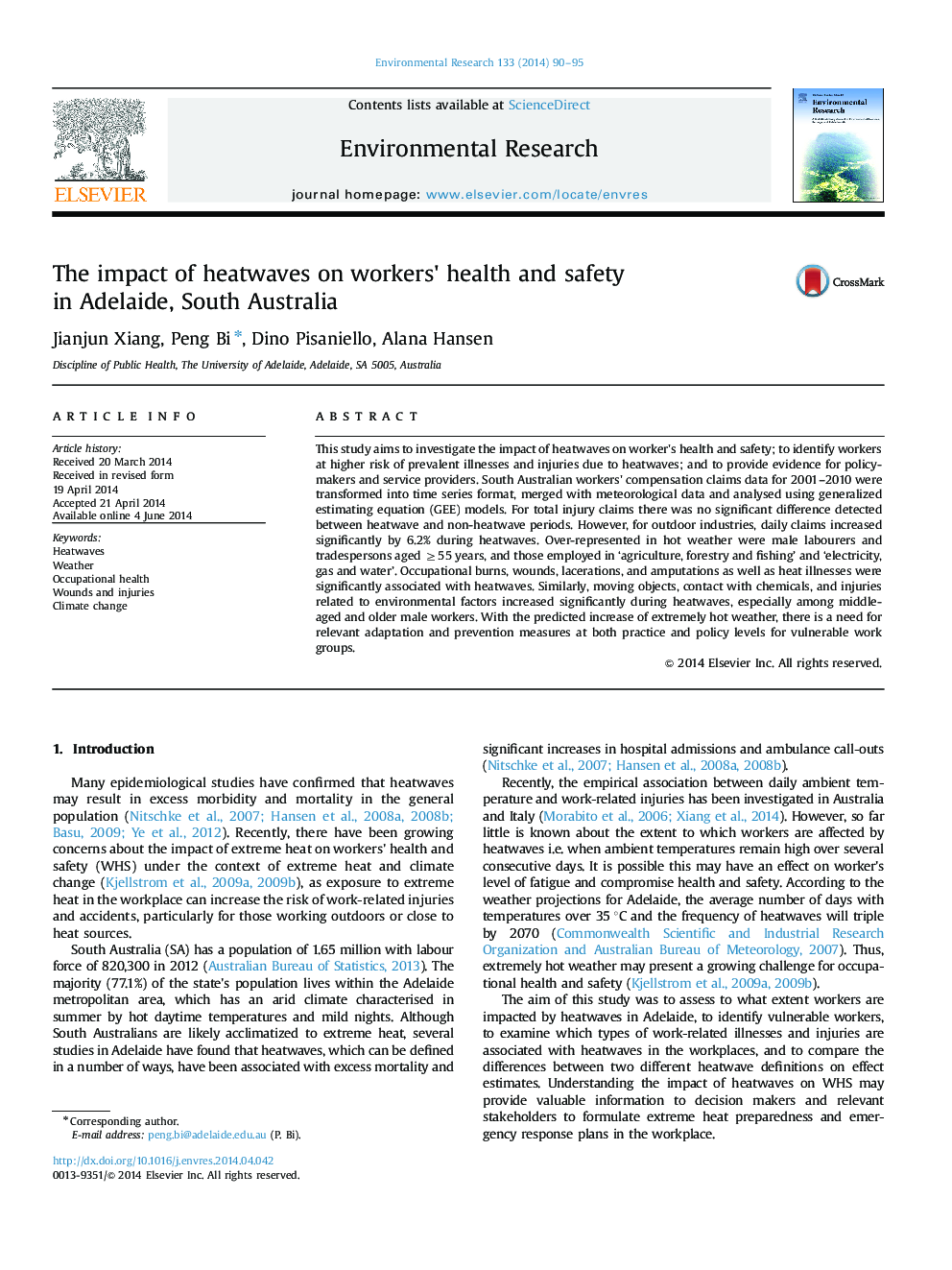| Article ID | Journal | Published Year | Pages | File Type |
|---|---|---|---|---|
| 4469707 | Environmental Research | 2014 | 6 Pages |
•We investigate the impacts of heatwaves on workers׳ health and safety.•We identify workers at higher risk of illnesses and injuries during heatwaves.•The differences between two heatwave definitions on effect estimates are compared.•Daily injury claims for outdoor industries increased by 6.2% during heatwaves.•Relevant heat prevention measures are required for vulnerable workers.
This study aims to investigate the impact of heatwaves on worker׳s health and safety; to identify workers at higher risk of prevalent illnesses and injuries due to heatwaves; and to provide evidence for policy-makers and service providers. South Australian workers׳ compensation claims data for 2001–2010 were transformed into time series format, merged with meteorological data and analysed using generalized estimating equation (GEE) models. For total injury claims there was no significant difference detected between heatwave and non-heatwave periods. However, for outdoor industries, daily claims increased significantly by 6.2% during heatwaves. Over-represented in hot weather were male labourers and tradespersons aged ≥55 years, and those employed in ‘agriculture, forestry and fishing’ and ‘electricity, gas and water’. Occupational burns, wounds, lacerations, and amputations as well as heat illnesses were significantly associated with heatwaves. Similarly, moving objects, contact with chemicals, and injuries related to environmental factors increased significantly during heatwaves, especially among middle-aged and older male workers. With the predicted increase of extremely hot weather, there is a need for relevant adaptation and prevention measures at both practice and policy levels for vulnerable work groups.
